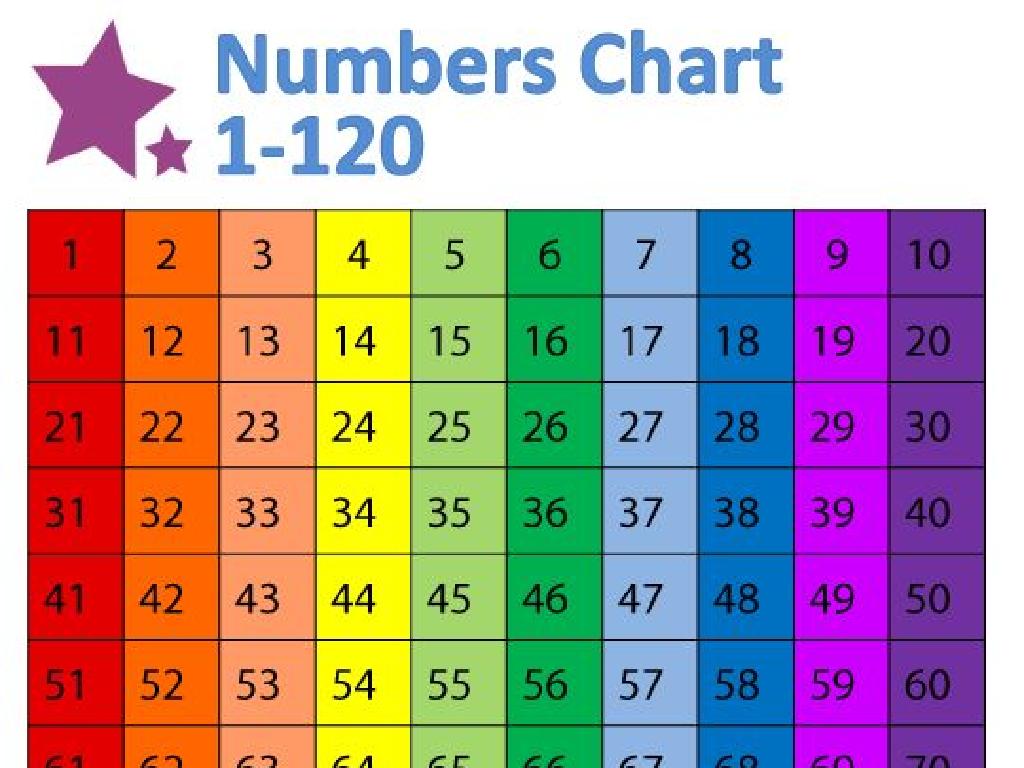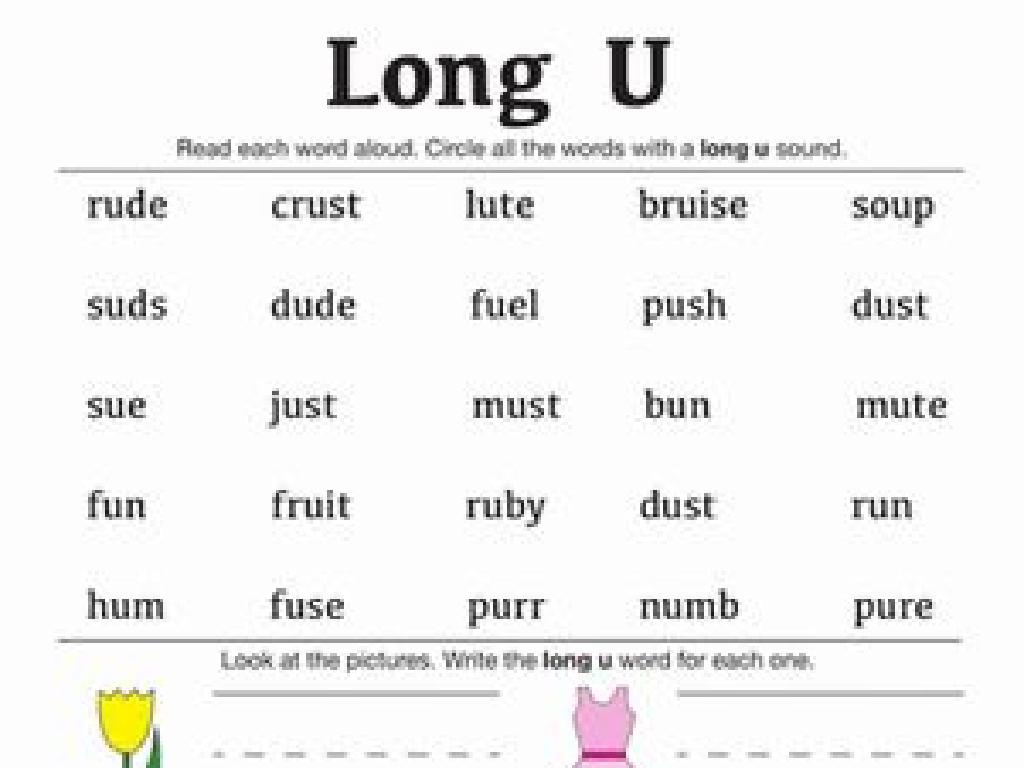Describe A Sequence Of Transformations
Subject: Math
Grade: Eighth grade
Topic: Transformations And Congruence
Please LOG IN to download the presentation. Access is available to registered users only.
View More Content
Describing a Sequence of Transformations
– Transformations in geometry
– Movements of shapes on a plane: translation, rotation, reflection
– Sequence of transformations
– A step-by-step process of transformations applied to a shape
– Position change, shape remains
– Transformations can move a shape but don’t change its size or angles
– Congruence through transformations
– Shapes remain exactly the same size and shape after transformations
|
This slide introduces students to the concept of transformations and their role in understanding congruence in geometry. Transformations include translations (slides), rotations (turns), and reflections (flips). A sequence of transformations is a combination of these movements applied one after the other. It’s crucial to emphasize that although the position of an object may change, its shape and size remain constant, which is the essence of congruence. Use examples like sliding a book across a table or flipping a playing card to illustrate these concepts. Encourage students to visualize and later practice with actual shapes to solidify their understanding.
Understanding Geometric Transformations
– Define geometric transformation
– A transformation alters a shape’s position or size on a plane.
– Explore the four main types
– Translation: slide, Rotation: turn, Reflection: flip, Dilation: resize.
– Combining transformations
– Transformations can be applied in sequence for intricate changes.
– Complex shape movements
|
This slide introduces the concept of transformations in geometry, which are operations that move or change the shape of figures on a plane. Start by defining transformation and then describe each of the four main types: translation (sliding the shape), rotation (turning the shape), reflection (flipping the shape over a line), and dilation (resizing the shape). Emphasize that these transformations can be combined in various sequences to achieve more complex movements and changes in shapes. Use visual aids to demonstrate each type of transformation and encourage students to visualize how combining these can result in intricate designs or movements.
Understanding Translation in Transformations
– Translation: sliding shapes
– Translation means moving without rotating or flipping the shape.
– Points move equally and uniformly
– Each point of the shape must move the same exact distance in the same direction.
– Example: triangle translation
– A triangle shifts 5 units up, 3 units right, without turning or flipping.
– Consistent movement in translations
|
This slide introduces the concept of translation as a type of transformation in geometry. Translation involves sliding a shape from one position to another without rotating it or flipping it over. It’s crucial to emphasize that during a translation, every point of the shape moves the same distance and in the same direction, maintaining the shape’s orientation. Use the example of moving a triangle to make the concept more concrete. Have students practice by drawing a shape on graph paper and translating it according to given units. This will help them visualize the consistent movement characteristic of translations.
Understanding Rotation in Transformations
– Rotation: turning a shape
– A shape spins around a fixed point
– Center of rotation defined
– The fixed point that a shape turns around
– Measuring rotation in degrees
– Angles of turn are quantified in degrees
– Example: rotating a square
– A square turned 90° clockwise around its center
|
This slide introduces the concept of rotation, one of the key transformations in geometry. Rotation involves turning a shape around a specific point called the center of rotation. It’s crucial to understand that the shape stays in the same plane during this process. Angles of rotation are measured in degrees, which helps us describe the extent of the turn. For example, rotating a square 90 degrees clockwise means each corner of the square moves to the position of the next corner in the direction of the rotation. Use this slide to explain the concept clearly and provide students with a visual example if possible. Encourage students to visualize the rotation by considering the movement of the hands of a clock.
Understanding Reflection in Transformations
– Reflection: flipping a shape
– Imagine flipping a shape to see its mirror image
– Line of reflection acts as a mirror
– This imaginary line determines how the shape is flipped
– Example: Reflect a pentagon
– Reflecting a shape over the y-axis swaps its left and right sides
– Reflection changes orientation
– The shape’s position changes, but not its size or shape
|
This slide introduces the concept of reflection, a type of transformation in geometry. Reflection involves flipping a shape over a line, known as the line of reflection, to create a mirror image. It’s crucial to emphasize that the original shape and the reflected image are congruent, meaning they have the same size and shape but have a different orientation. Use the example of reflecting a pentagon over the y-axis to illustrate how the position of the shape changes while maintaining its properties. Encourage students to visualize the process by considering how their own reflection appears in a mirror. This will help them grasp the concept of reflection in a more tangible way.
Understanding Dilation in Transformations
– Dilation: resizing while keeping proportions
– Think of dilation like a balloon inflating or deflating
– Center of dilation: a fixed point
– It’s like the anchor point from which the shape stretches or shrinks
– Example: enlarging a circle’s size
– Imagine a circle growing to double its radius from a point
– Dilation’s role in sequences of transformations
|
Dilation is a transformation that alters the size of a figure but not its shape. It’s essential to emphasize that proportions remain consistent during this process. The center of dilation acts as a pivot point from which all points of the shape are uniformly enlarged or reduced. Use the example of a circle being dilated to twice its size to illustrate the concept visually. Explain that dilation can be part of a sequence of transformations, which might include translations, rotations, and reflections. Encourage students to think about real-world examples of dilation, such as zooming in on a picture or adjusting the size of an image on a computer screen.
Combining Transformations
– Sequence of transformations
– Perform transformations one after another
– Order affects the outcome
– Changing the order can change the final shape
– Example: Transforming a hexagon
– Translate, then rotate, and reflect a hexagon
– Practice with different sequences
|
This slide introduces students to the concept of combining multiple transformations to alter a shape. It’s crucial to emphasize that the order in which transformations are applied can significantly impact the final result. Use the example of a hexagon to show how translating (sliding), rotating (turning), and reflecting (flipping) in a specific sequence changes its position and orientation. Encourage students to experiment with different sequences using the same shape to see how the outcome varies. This will help them understand the importance of order in sequences of transformations. Provide additional practice problems where students can apply a series of transformations to different shapes and predict the outcomes.
Describing a Sequence of Transformations
– List steps in sequence order
– Use precise transformation language
– Include direction, distance, angle, line of reflection, and scale factor
– Example of a transformation sequence
– ‘Translate 4 units left, rotate 180 degrees about the origin, reflect over the x-axis’
– Practice with different sequences
– Try describing a shape moving 3 units up, then reflecting over the y-axis
|
When teaching students to describe a sequence of transformations, it’s crucial to emphasize the importance of the order in which the transformations are applied. Using precise language helps to accurately communicate the steps involved in the transformation process. For example, when a shape is translated 4 units to the left, rotated 180 degrees about the origin, and then reflected over the x-axis, each step affects the shape’s position and orientation. Encourage students to practice by giving them various sequences to describe, ensuring they understand how to apply the concepts of direction, distance, angle, line of reflection, and scale factor. This will help them visualize and understand the cumulative effect of multiple transformations on a geometric figure.
Practice Time: Sequence of Transformations
– Start with simple transformation sequences
– Increase complexity step by step
– Pair up for description and drawing
– Discuss with your partner and decide who describes and who draws first
– Use graph paper for precision
– Graph paper helps in maintaining scale and accuracy
|
This slide is designed to engage students in an interactive class activity focused on understanding sequences of transformations. Begin with basic sequences such as a single translation or reflection, and then introduce more complex sequences involving combinations of transformations. Encourage students to work in pairs, fostering collaboration and communication skills. One student should describe the transformation while the other draws it on graph paper, then switch roles. This will help them to visualize and better understand the concept of transformation sequences. Provide guidance on how to accurately draw transformations on graph paper, emphasizing the importance of scale and precision. Offer several examples of increasing complexity for students to practice, and be ready to assist pairs that require additional support.
Class Activity: Transformation Relay
– Form groups and create a transformation sequence
– Start with an initial shape on paper
– Each student applies one transformation
– Transformations can be a translation, rotation, reflection, or dilation
– Final student describes the transformation sequence
– Explain using terms like ‘slide’, ‘turn’, ‘flip’, or ‘resize’
|
This activity is designed to help students understand the concept of transformations in a collaborative and hands-on way. Each group will work together to apply a series of transformations to a shape, with each student responsible for one step in the process. The activity will reinforce the types of transformations and the cumulative effect they have on shapes. For the teacher: Prepare cut-out shapes and graph paper for each group. Suggest starting with simple shapes like triangles or rectangles. Monitor the groups to ensure each student participates and understands the transformation they are applying. Possible variations for different groups could include specifying the type of transformations to be used, limiting the number of transformations, or challenging students to achieve a specific end shape.






